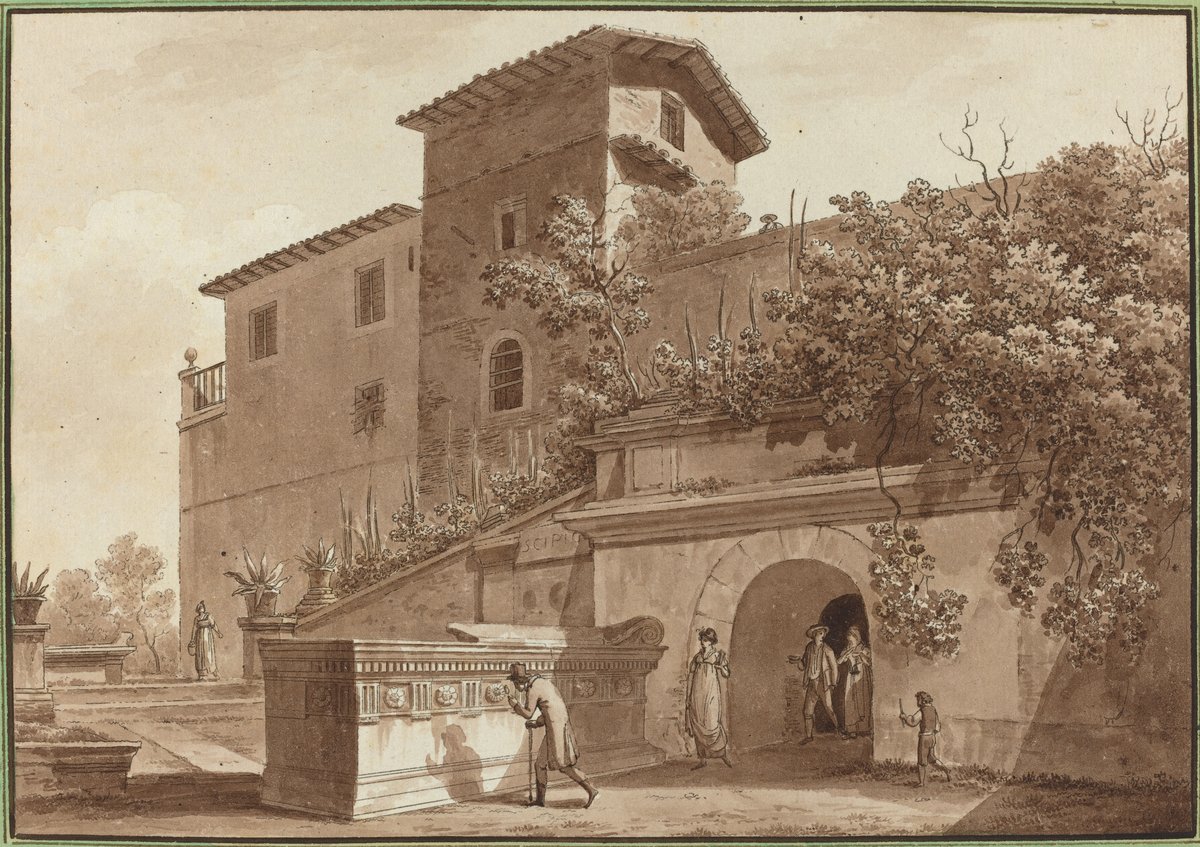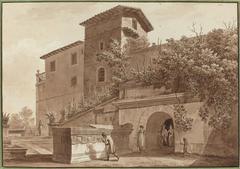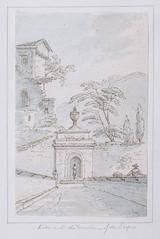
Tomb of the Scipios Rome: Visiting Hours, Tickets, and Travel Guide
Date: 14/06/2025
Introduction
Nestled along Rome’s legendary Via Appia Antica, the Tomb of the Scipios (Sepulcrum Scipionum) is a remarkable monument of the Roman Republic. This subterranean mausoleum, dating to the early 3rd century BCE, was the dynastic burial place of the Cornelii Scipiones—one of Rome’s most influential patrician families. Today, it stands as a testament to the Scipios’ enduring legacy, offering rare insights into ancient Roman funerary customs, social hierarchy, and early Latin epigraphy. Visitors to the Tomb of the Scipios can explore evocative underground chambers carved from volcanic tufa, decorated with some of the earliest surviving Latin inscriptions and vestiges of painted stucco. The site is carefully managed for preservation, with limited visiting hours and mandatory advance booking, ensuring both its protection and the quality of the visitor experience. (Musei Capitolini, Trek Zone, Soprintendenza Speciale Roma)
Contents
- Introduction
- Historical Background and Scipio Family Legacy
- Architecture and Artistic Elements
- Site History: Transformation and Rediscovery
- Practical Visitor Information
- Cultural Significance and Preservation
- FAQs
- Conclusion and Recommendations
- Sources and Further Reading
Historical Background and Scipio Family Legacy
The Tomb of the Scipios was constructed around 298 BCE, coinciding with the consulship of Lucius Cornelius Scipio Barbatus (Rome Art Lover). The Cornelii Scipiones were one of the most prominent families of the Roman Republic, producing legendary figures such as Publius Cornelius Scipio Africanus, the general who defeated Hannibal at the Battle of Zama (Britannica). The tomb served not just as a burial chamber, but as a monumental assertion of family identity and status.
The site features elogia—inscriptions in Old Latin celebrating the public virtues, military victories, and religious piety of the Scipio lineage. The sarcophagus of Scipio Barbatus, now housed in the Vatican Museums, is especially notable for its Saturnian verse epitaph, a crucial document for the study of early Latin (Vatican Museums).
Architecture and Artistic Elements
Construction and Layout
Carved into the region’s characteristic tufa stone, the tomb is a hypogeum—a subterranean complex featuring a central corridor (dromos) and multiple burial niches (loculi) (The Brain Chamber). The original façade, reconstructed in the 18th century, once bore monumental inscriptions and decorative pilasters, visually announcing the family’s prestige.
Decorative Features
Although much of the original decoration has been lost, traces of frescoes and stucco reliefs survive, hinting at a once-colorful interior adorned with motifs such as garlands, rosettes, and mythological scenes. The painted and inscribed sarcophagi reflect a blend of Etruscan and early Roman traditions, underscoring the evolution of aristocratic funerary art in the Republic (Soprintendenza Speciale Roma, Livius.org).
Site History: Transformation and Rediscovery
The tomb was in use from the early 3rd century BCE until the 1st century BCE, after which it fell into neglect as burial practices changed. Over the centuries, it was forgotten, looted, and partially destroyed. Rediscovered in 1780 during property work, the site yielded a trove of sarcophagi, inscriptions, and art—many of which are now in the Vatican Museums, Louvre, and British Museum (British Museum). Archaeological efforts in the 19th and 20th centuries led to further restoration and eventual public access. Today, management and preservation are overseen by the Soprintendenza Speciale Archeologia, Belle Arti e Paesaggio di Roma.
Practical Visitor Information
Location
- Address: Via di Porta San Sebastiano 9, Celio district, Rome
- Access: Near Porta Capena, along the Via Appia Antica; reachable by bus lines 118 or 218, or by walking/biking the Appian Way (Trek Zone, Rome Official Tourism)
Opening Hours
- Open on select days, generally Tuesday–Saturday, 10:00 AM–4:00 PM.
- Seasonal variations and closures for conservation are possible. Always check official sources (Sovrintendenza Capitolina).
Tickets and Booking
- Advance booking is mandatory due to preservation needs and limited capacity (typically max. 12 per group).
- Tickets: €4.00 (full), €3.00 (reduced), free for MIC cardholders. Guided tours may carry additional fees.
- Reservations: Call +39 060608 (daily, 9:00–19:00) or check official websites for online booking.
- Group visits must be accompanied; individuals may join scheduled tours by reservation.
Guided Tours and Visitor Experience
- Entry is only by guided tour, ensuring both conservation and rich interpretation.
- Highlights include the dromos, ancient loculi, inscriptions, and reconstructed architectural features.
- Interpretive panels and staff assistance are available; private guides can be arranged.
Accessibility and Safety
- Due to stairs, uneven floors, and confined underground spaces, the site is not fully wheelchair accessible.
- Protective helmets are required and provided on site.
- Wear sturdy shoes and bring a jacket—the underground chambers are cool and damp.
- Notify staff when booking if you have mobility needs.
Visitor Guidelines
- Photography is generally allowed (no flash), but restrictions may apply to protect the artwork.
- Adhere to all safety and preservation rules.
- Plan to combine your visit with nearby sites such as the Catacombs of San Callisto, Baths of Caracalla, and Parco della Caffarella.
Cultural Significance and Preservation
The Tomb of the Scipios is a unique surviving example of a Republican family tomb, encapsulating the values and political aspirations of Rome’s early elite. Its inscriptions are among the oldest Latin funerary texts, predating much of Roman literature and providing a direct voice from antiquity (Oxford Classical Dictionary). The tomb’s rediscovery and study have influenced generations of archaeologists, historians, and artists.
Conservation remains a central priority. Access is strictly regulated, with guided tours, environmental monitoring, and ongoing restoration to ensure the site’s survival for future generations (Rome Official Tourism).
Frequently Asked Questions (FAQ)
Q: How do I book tickets for the Tomb of the Scipios?
A: Call +39 060608 daily (9:00–19:00) or check the Sovrintendenza Capitolina website for online options.
Q: Are guided tours required?
A: Yes, entry is only permitted with a guided tour, arranged through official booking or private guides.
Q: Is the tomb wheelchair accessible?
A: Accessibility is limited; underground chambers may be difficult for those with mobility issues. Discuss your needs when booking.
Q: What are the visiting hours?
A: Typically Tuesday–Saturday, 10:00–16:00. Always confirm in advance, as hours may change.
Q: Is photography allowed?
A: Photography (without flash) is permitted unless otherwise indicated by staff.
Conclusion and Recommendations
The Tomb of the Scipios is an essential destination for anyone interested in Roman history, archaeology, or funerary art. Advance booking and guided tours offer an in-depth exploration of this extraordinary hypogeum, while strict visitor limits help preserve its delicate features. Set within the scenic Appian Way and surrounded by other ancient attractions, a visit here enriches any itinerary focused on Rome’s ancient heritage.
To make the most of your visit:
- Reserve tickets well in advance.
- Wear suitable clothing and shoes.
- Consider combining your tour with other sites along the Via Appia.
- For an enhanced experience, download audio guides or use the Audiala app.
Immerse yourself in the legacy of the Scipio family and the world of the early Roman Republic—an encounter that brings history vividly to life beneath the city’s modern streets.
Sources and Further Reading
- Rome Art Lover - Visiting the Tomb of the Scipios
- Musei Capitolini - Sala del Sepolcro degli Scipioni
- Britannica - Scipio Africanus
- Vatican Museums - Sarcophagus of Lucius Cornelius Scipio Barbatus
- Soprintendenza Speciale Roma - Sepolcro degli Scipioni
- British Museum - Tomb of the Scipios Artifacts
- Trek Zone - Tomb of the Scipios
- The Brain Chamber - Tomb of the Scipios
- Academia.edu - The Large Collective Burial Monuments of the Tomb of the Scipios in Rome
- Oxford Classical Dictionary - Scipio Family Entry
- Rome Official Tourism - Tomb of the Scipios
- Sovrintendenza Capitolina - Sepolcro degli Scipioni



















































































































































































































































